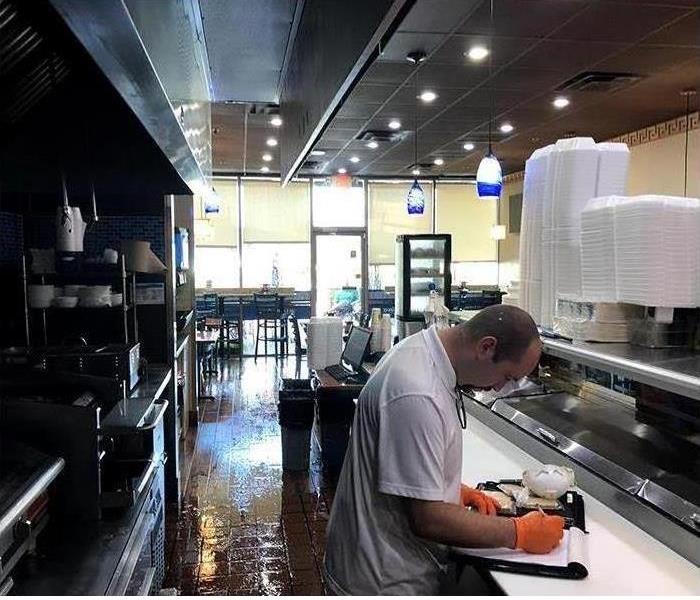Archived Fire Damage Blog Posts
Restoring Your Safe Haven: Fire Damage Repair and Restoration
8/2/2024 (Permalink)
A fire can be a devastating experience, leaving behind not just physical damage but also emotional turmoil. At SERVPRO®, we understand the complex challenges that come with fire damage. Our commitment to providing unparalleled Fire Damage Repair and Restoration ensures that your property is restored to its former glory—and we’re here to support you every step of the way.
SERVPRO of University, SE Orlando: Your Partner in Fire Damage Repair and Restoration
At SERVPRO, we merge cutting-edge technology with a compassionate touch to offer comprehensive fire damage repair and restoration. Our mission is to bring your home or business back to life, making it even better than before.
Comprehensive Fire Damage Repair Services
When a fire strikes, quick action is essential to mitigate further damage. Our comprehensive fire damage repair services address every facet of the restoration process, from the initial assessment to the final touches.
Initial Assessment and Safety Protocols
Our experienced team begins with a detailed inspection to determine the extent of the damage. This crucial step allows us to pinpoint potential hazards and implement immediate safety measures to protect both the occupants and our restoration team. Establishing a thorough assessment lays the groundwork for an effective and efficient restoration plan.
Smoke and Soot Removal
One of the most challenging aspects of fire damage is the residual smoke and soot, which can infiltrate walls, carpets, and furnishings. These residues pose health risks and must be addressed swiftly. Our team employs specialized equipment and techniques to eradicate smoke and soot from every corner of your property. This critical step enhances air quality and paves the way for further restoration efforts.
Advanced Restoration Techniques to Rebuild Your Property
Restoring a fire-damaged property involves more than just surface repairs; it requires addressing underlying issues to ensure a safe and comfortable environment once again.
Structural Repairs and Rebuilding
Fires can significantly compromise the structural integrity of your property. At SERVPRO of University, SE Orlando, we offer an array of structural repair services, including rebuilding damaged areas. Our skilled technicians work diligently to restore walls, roofs, and foundations, ensuring they meet the highest standards of safety and stability. Precision and attention to detail are our hallmarks, ensuring your property is safe for reoccupation.
Advanced Cleaning and Sanitization
Beyond visible damage, fire residues can leave harmful contaminants. Our advanced cleaning and sanitization procedures are designed to eliminate these hazards thoroughly. We utilize industry-leading products and techniques to clean, disinfect, and deodorize all affected surfaces, ensuring a safe and healthy living environment.
Caring for Your Belongings with Meticulous Attention
At SERVPRO of University, SE Orlando, we recognize that your property comprises more than just bricks and mortar; it's a repository of cherished memories and valued possessions. Our restoration process encompasses both physical repair and emotional recovery.
Content Inventory and Pack-Out Services
We begin by systematically inventorying and packing out all salvageable items from your home or business. Our team meticulously documents and photographs each item, ensuring nothing is overlooked. This process safeguards your possessions and allows us to work more efficiently during restoration.
Restoration and Cleaning of Personal Belongings
Once your belongings are securely stored, we employ specialized techniques to clean and restore as many items as possible. Whether it's electronics, documents, or sentimental heirlooms, we handle each item with utmost care. Our objective is to return your belongings to their pre-fire condition, preserving the memories they hold.
Reintegration and Final Touches
As the restoration process nears completion, we carefully reintegrate your belongings into your refurbished property. This final step ensures that everything is returned to its rightful place, making your property feel like home again. Our attention to detail in this phase is paramount, ensuring your transitions back to normalcy is smooth.
Call to Action:
Don't let fire damage dictate your future. Contact SERVPRO of University, SE Orlando for expert Fire Damage Repair and Restoration today. Our team is here to support you in rebuilding and recovering every step of the way.
At SERVPRO of University, SE Orlando, we're more than just a restoration company; we're your dedicated partners in recovery. With our expertise and unwavering commitment, we ensure your journey from disaster to restoration is as seamless and stress-free as possible. Trust us to help you make it "Like it never even happened."
Understanding Different Types of Fires: Prevention, Extinguishing, and Post-Fire Cleanup
6/23/2023 (Permalink)
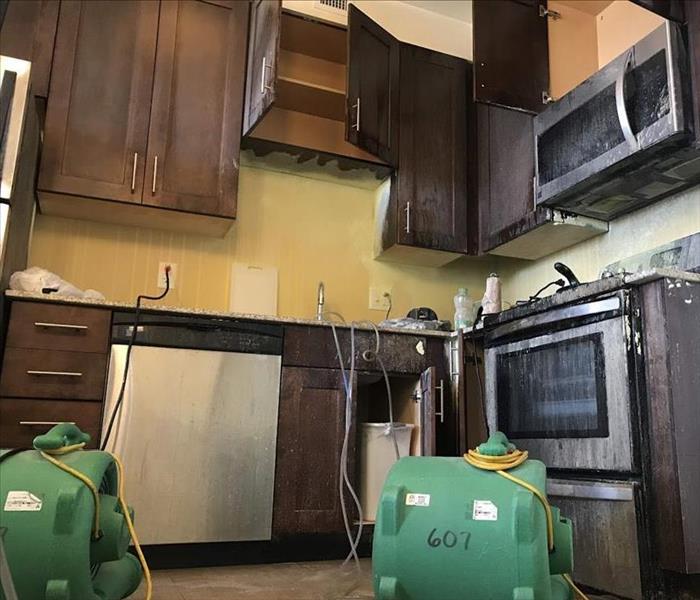 This photo of a kitchen after the fire department left is one example of the amount of cleaning that is left to be done.
This photo of a kitchen after the fire department left is one example of the amount of cleaning that is left to be done.
Navigating the Flames: Types of Fires and Post-Fire Cleanup
Fires can be devastating, causing immense damage to homes and commercial spaces. Understanding the different types of fires, how to extinguish them effectively, and the appropriate cleanup methods afterward are essential for safeguarding lives, minimizing property damage, and ensuring a thorough restoration process. In this article, we will explore the various types of fires that can occur in residential and commercial settings, discuss their extinguishing techniques, and outline the appropriate cleanup procedures post-fire.
- Class A Fires: Combustible Materials
Class A fires involve ordinary combustible materials such as wood, paper, cloth, and plastics. These fires are commonly caused by electrical malfunctions, smoking materials, or cooking accidents. To extinguish Class A fires, the most effective method is to use water or water-based extinguishers. Proper post-fire cleanup includes removing debris, assessing structural damage, and thoroughly drying the affected areas to prevent mold growth.
- Class B Fires: Flammable Liquids
Class B fires involve flammable liquids such as gasoline, oil, grease, or solvents. These fires can occur in kitchens, garages, or industrial settings. It is crucial to never use water to extinguish a Class B fire, as it can spread the flames. Instead, flammable liquid fire extinguishers or dry chemical extinguishers should be used. After a Class B fire, proper cleanup involves removing any remaining flammable liquids, ventilating the area, and conducting a thorough inspection for hidden damage.
- Class C Fires: Electrical Equipment
Class C fires involve energized electrical equipment, such as faulty wiring, appliances, or overloaded circuits. These fires can pose a significant risk due to the potential for electrocution. The first step in extinguishing a Class C fire is to de-energize the electrical source. Using a carbon dioxide (CO2) or dry chemical extinguisher designed for electrical fires is the safest approach. Cleanup after a Class C fire should involve conducting a professional inspection of the electrical system, repairing any damaged wiring, and replacing affected appliances or equipment.
- Class D Fires: Combustible Metals
Class D fires involve combustible metals, such as magnesium, titanium, or sodium. These fires are often found in laboratories or industrial settings where these metals are present. Specialized dry powder extinguishers specifically designed for the type of metal involved should be used to suppress Class D fires. Cleanup post-fire should be handled by professionals trained in handling hazardous materials to ensure proper disposal and decontamination.
- Class K Fires: Kitchen Fires
Class K fires occur in commercial kitchens due to grease and cooking oil ignitions. These fires can spread rapidly and cause significant damage if not extinguished correctly. Specialized wet chemical fire extinguishers should be used to smother the flames and cool the burning oil. After a Class K fire, thorough cleaning and degreasing of affected surfaces, ventilation of the area, and inspection of the kitchen hood and exhaust system are necessary.
Conclusion:
Understanding the different types of fires that can occur in homes and commercial spaces is crucial for effective fire prevention, extinguishing techniques, and post-fire cleanup. By knowing the appropriate methods to extinguish each type of fire and implementing proper cleanup procedures, we can mitigate damage, ensure safety, and restore properties to their pre-fire condition. Remember, fire safety is everyone's responsibility, so stay informed, be prepared, and prioritize professional assistance when dealing with the aftermath of a fire.
Commercial Fire Safety and Prevention Tips
6/13/2022 (Permalink)
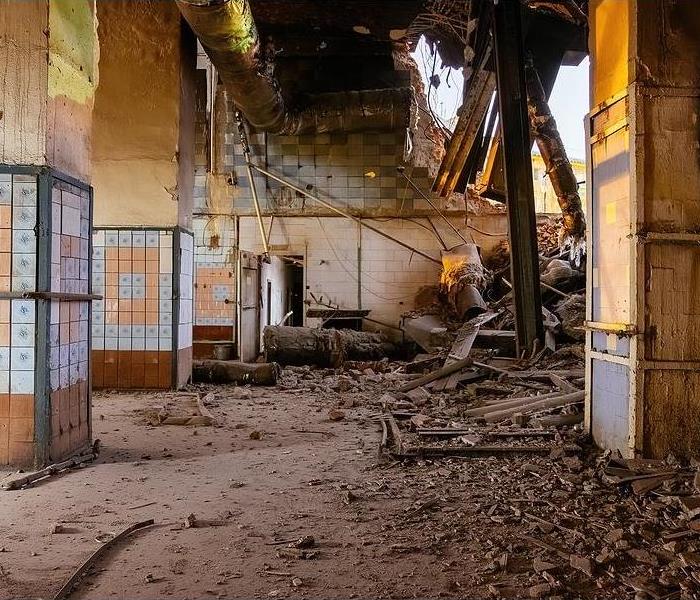 Hiring a professional company with experience is the only way to get past the damage that can be done by fire in a commercial space.
Hiring a professional company with experience is the only way to get past the damage that can be done by fire in a commercial space.
A fire can quickly become a horrific event that destroys property, endangers lives, and leaves the occupants with limited resources to rebuild. But fires in commercial spaces can also be a costly business interruption. Fortunately, there are steps that companies can take to reduce the possibility of fire in their space while maintaining productivity and avoiding potential legal liabilities.
Tips for Fire Safety and Prevention in a Commercial Property
A comprehensive fire prevention plan for an office or retail space includes a range of steps, from providing adequate smoking areas and removing combustible items from the premise to testing alarms and forming an evacuation plan. Some states mandate that companies with a certain number of employees have a business fire safety plan. Here are five additional tips for ensuring safety by preventing fires in commercial spaces:
1. Designate an area outside that space for smokers to use. Many fires start through smoking materials or careless disposal of smoking materials. Designate a smoking area away from the building and any flammable material, with adequate drainage to protect the soil from cigarette butts and ashes. Choose an area that is covered to keep people dry in the case of rain or snow.
2. Consider using fire-resistant tape on floors, carpets, and drapes, especially in high-traffic areas. It is inexpensive and may prevent the rapid spread of fire. Be sure to follow the manufacturer’s instructions for proper use.
3. Keep matches and lighters out of children’s reach and in a locked drawer. Children have many chances to experiment with fire during their childhood years—either on purpose or unintentionally. The result of a child playing with fire could be an awful tragedy.
4. Install smoke detectors in all commercial spaces, particularly near sleeping areas or areas where paper is burned. Smoke detectors will be your first warning in case of fire, so the fire doesn’t get the upper hand.
5. Keep a fire extinguisher handy. An ABC-rated (A-B-C) fire extinguisher near common areas can offer a better chance of rapid containment of a small fire before it gets out of hand. Fire extinguishers should be regularly tested and maintained to ensure they are ready to use if needed.
Avoiding fire hazards in a commercial space is not difficult but does require some effort. These simple steps can help keep you and your employees safe and protect your investment against the risks of fire. And when the proper measures are taken to prevent fires, occupants can focus on their work instead of worrying about a potentially life-threatening event.
Fire safety is a responsibility that falls to all parties involved in managing a commercial space—from the owners to the manager and staff to any visitors. By following these simple steps, building occupants can have peace of mind knowing that they are doing their part in fire prevention.
Fires can be devastating, and the victims of such tragedies are usually left with limited resources to rebuild. Those in charge of the property must know how to create an effective fire safety plan for their commercial spaces and follow their plan. But even if you follow your plan meticulously, you may still face costly consequences. When a fire takes place, it’s essential to know what happened so you can gather evidence that can help win your case.
Fire Damage: The Do's and Don'ts
5/31/2022 (Permalink)
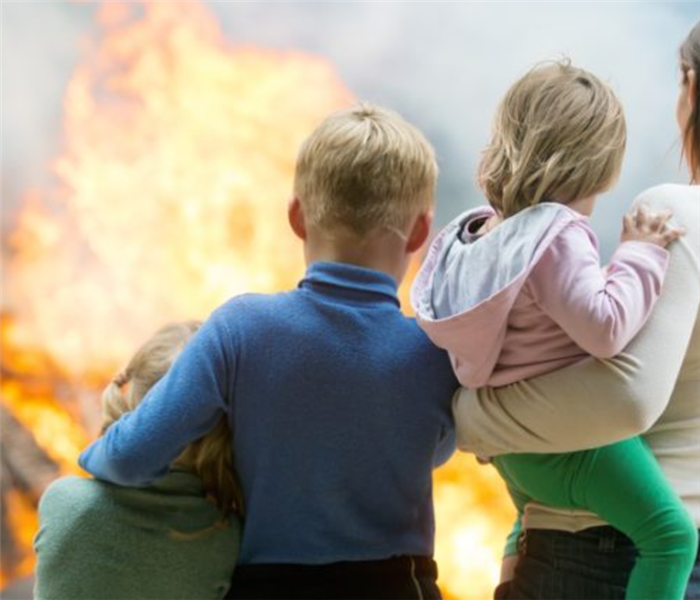 Until the fire department has declared it safe, do not enter your home. There could be structural damage that makes it unsafe to enter.
Until the fire department has declared it safe, do not enter your home. There could be structural damage that makes it unsafe to enter.
A fire can be one of the most devastating things to a home. Not only is there the damage from the fire itself, but often water is used to put out the fire, which can cause additional damage. If you have experienced a fire in your home, it is important to know what to do and what not to do to minimize the damage.
The DO's
- Make safety a priority: Your safety and your family's safety should be your number one priority after a fire. Be sure to check for any structural damage to your home before re-entering and be aware of any potential hazards.
- Call a professional: Once you have ensured that everyone is safe, the next step is to call a professional fire damage restoration company. They will be able to assess the damage and start restoring your home.
- Call your insurance company: As soon as possible after the fire, you should call your insurance company and let them know what has happened. They will be able to help you determine what coverage you have and what steps you need to take next.
- Make a list of damaged items: Once the fire is out and it is safe to enter your home, make a list of all the items that were damaged by the fire. It will be important when you are making an insurance claim.
- Take pictures: If possible, take pictures of the damage. It will provide documentation for your insurance claim.
- Clean up what you can: Once you have documented the damage, start cleaning up what you can. It will help prevent further damage and will make the repair process easier.
- Be very careful when walking around your home. There may be loose floorboards or other hazards that you cannot see.
- Take advantage of any resources your local community may offer. Many communities have resources available to help homeowners who have experienced a fire. These resources may include temporary housing, financial assistance, or counseling services.
The DON'Ts
- Please don't enter your home until it is safe: Until the fire department has declared it safe, do not enter your home. There could be structural damage that makes it unsafe to enter.
- Don't try to clean up on your own: Many people think they can save money by cleaning up the damage themselves. However, this is not recommended. Cleaning up fire damage is a complex process and, if done wrong, could cause further damage. It is best to leave it to the professionals.
- Don't throw away damaged items: Until you have talked to your insurance company, do not throw away any items that were damaged in the fire. They may be able to be repaired or restored, and you don't want to get rid of something that your policy could cover.
- Don’t use any fans or air conditioners until you have consulted with a professional restoration company. Fans and air conditioners can spread soot and smoke damage if they are not correctly used.
Conclusion
If you have experienced a fire in your home, follow these dos and don'ts to minimize the damage. And, be sure to call your insurance company as soon as possible so they can help you through the process.
Fire Safety for Your Home Appliances
9/9/2021 (Permalink)
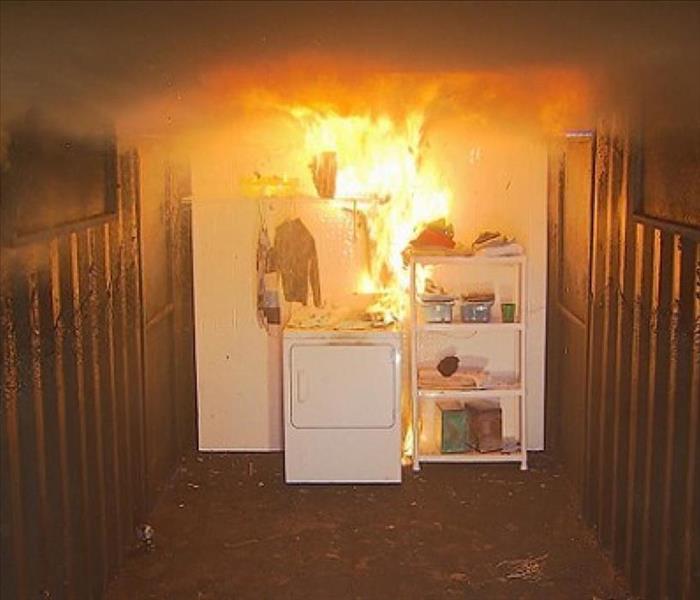 Always make sure that the laundry room has proper ventilation because detergents can produce harmful gases when mixed with hot water and air.
Always make sure that the laundry room has proper ventilation because detergents can produce harmful gases when mixed with hot water and air.
Fires are common in the home, with one out of every six Americans experiencing a fire each year.
While many home appliances come equipped with safety features, others do not. Consumers must read the manual for their appliance and be aware of any specific safety features that it has before purchasing the product.
Why Home Appliances are Particularly Suitable for a Fire?
Home appliances are particularly suitable for a fire because of their sensitive materials.
Home appliances are made of highly flammable materials. This means that the fire can spread quickly and easily if it starts in one room.
With that said, there are a number of general safety features that you should check on all of your appliances to ensure they're safe:
- Check the plug and make sure it's on a circuit without other appliances plugged in. This is to ensure that there is enough power for the appliance while it's running.
- Look for the UL approval seal which assures you that the appliance has been inspected by a certified independent testing lab and meets all safety standards.
- Check all cable connections and tighten if needed. This ensures that there are no problems with circuitry in the appliance, which could lead to a fire hazard.
And, there are also some specific tips when it comes to individual appliances:
The Refrigerator
Refrigerators are a common source of fires in the home.
It is important to follow a few safety precautions when using the refrigerator. The following are some of the important ones:
- One of the best ways to make sure you don't start a fire is to keep your refrigerator door closed when it's not in use.
- Keep any flammable materials away from the appliance.
- Never store items that give off fumes, such as nail polish remover, near your fridge.
- Keep children and pets away from an open fridge door that doesn't have a child lock on it, and do not place anything that might tempt them next to the door handle.
- Check your kitchen for any loose wires that could become a fire hazard.
The Washing Machine and Dryer
We cannot forget about safety when using the washing machine and dryer. You need to make sure that both machines are installed in a safe place. You should carefully follow the installation instructions and keep a watchful eye out for any signs of leaks or spills around either one of them.
Since electricity and water are involved in the process, it is important to know what can happen if something goes wrong with either. Many factors can cause a fire or other injury if not careful, so here are some helpful tips for safe usage:
- The fire safety rule is to make sure that there are no combustible materials nearby.
- The laundry room is filled with flammable substances like fabric softener, dryer sheets, and detergent. This is why a fire extinguisher should be placed in the laundry room for protection.
- Always make sure that the laundry room has proper ventilation because detergents can produce harmful gases when mixed with hot water and air. You should also make sure that you don’t overload the washer by using too much laundry soap or fabric softener. Overloading can lead to a buildup of excess heat which can cause a fire.
- Try to avoid using a gas-powered dryer as much as possible.
- Make sure you clean up the area surrounding your washing machine before use and always take care of small or medium-sized clothes separately from big ones like sheets and blankets.
Microwave Ovens
Here are some of the best precautions to take:
- When microwaving, you should always make sure that you're in a well-ventilated area and that the microwave is at least six inches away from any other object.
- If you are cooking anything besides plain, frozen food, then make sure to cover your dish with a lid or paper towel. Also, avoid using plastic containers as they can release chemicals into your food when heated.
- Microwaves can emit radiation so don't stand right next to them and keep some distance between the oven and yourself while cooking.
- Microwaves can actually create sparks and cause some fires, which becomes a serious problem if you are using metal containers for your food. Ergo, you should only be placing microwaveable items inside.
- One of the most important safety measures for microwave ovens is to make sure they are turned off when not in use. Microwaves release strong electromagnetic waves that can easily cause a fire if precautions aren't taken.
The Dishwasher
You have to be aware of the potential fire hazards associated with using a dishwasher. For instance, you have to be careful of the risk of electrical shock if water leaks into any electrical parts or connections.
With that in mind, here are some steps for maintaining fire safety while using this important kitchen appliance:
- Keep an eye on the dishwasher to make sure it does not overheat or get too hot
- Clean up any spills right away
- If the power goes off, turn off the dishwasher and do not restart it until you are sure there is no leak or spill inside
- Do not put any combustible materials in the dishwasher.
- Make sure that when you're looking at buying a dishwasher from a store or online that it has an automatic shut-off system - this will help stop any potential burns when opening the door after it has finished running its cycle.
The bottom line is that fires can happen in any home. But, there are a few things that you can do to make it less likely for a fire to break out.
If you keep in mind some of the most common causes of house fires, you should be able to plan for them. Here are some of the things you need to look out for:
- Faulty electrical wiring and appliances that are not maintained or installed correctly,
- Lack of smoke detectors,
- Improper use or storage of flammable liquids and gases,
- House fires caused by cooking equipment, etc.
In the Event of a Fire
It is important to have a fire escape plan and a fire extinguisher handy in the event of a fire. Above all else, do not risk your life if a fire spreads rapidly. Prioritize your safety and evacuate, then call the Orlando Fire Department immediately. After the fire, you will need the assistance of a reputable restoration company to handle your fire damage cleanup. Call SERVPRO of University, SE Orlando at (407) 678-5391 for the experts in fire damage restoration, smoke and soot cleanup, and even working with your insurance company!
Steps to Take After a Fire in Your Home
6/22/2021 (Permalink)
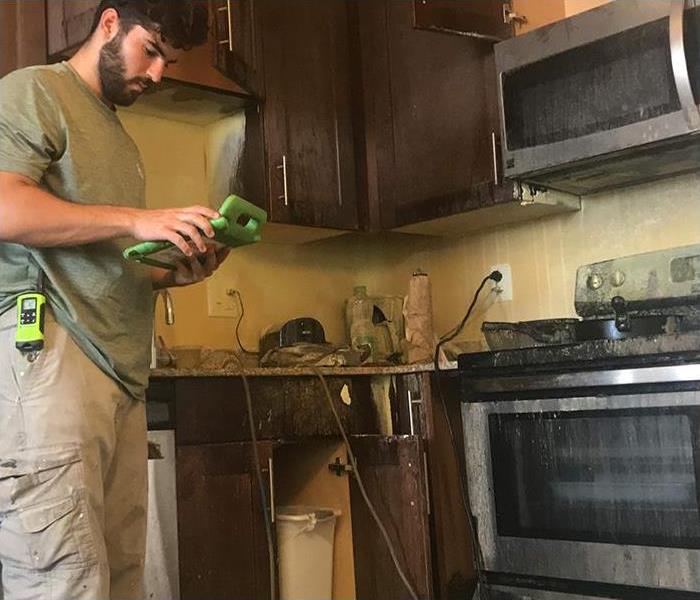 It is always recommendable that you hire fire damage restoration experts to help you perform a comprehensive and complete damage assessment.
It is always recommendable that you hire fire damage restoration experts to help you perform a comprehensive and complete damage assessment.
Although it is impossible to arrange for fire devastation in your home, it is recommendable to minimize the damages. Irrespective of the size, avoiding destruction requires you to act fast and prevent further damage due to smoke.
Finding out the scope of damage caused by the fire is usually the first step in fire damage restoration. It also involves securing an entire property before the renovation activities commence.
Are you looking for cost-friendly ways of renovating your building as a result of fire damage? If so, read through this article to help you avoid costly repair bills.
1. Damage Assessment
Generally, the step to take after a fire in your home is assessing the extent of fire damages, including smoke damages. Be sure to inspect the depth of the fire to your home walls, structure, furniture, and fixtures, indicating the damage due to heat.
It is always recommendable that you hire fire damage restoration experts to help you perform a comprehensive and complete damage assessment for your home.
Also, for insurance purposes, make sure that everything is documented and well recorded. Additionally, removing the undamaged furniture from the house will reduce smoke damages, and the sooner this is done, the better.
2. Professionals Only
Before you decide who to hire for your home renovation after fire damage, be sure to take your time and do thorough research. You might also check out your house insurance firm for recommendations.
However, be sure to research the company's history before hiring them. Also, it is essential to note that some companies might show up tricking you into signing them in for the renovation, be sure to ask them for a fire renovation license and work insurance.
3. Securing Your Home Foundation
The primary aim of any renovation work should be to help you avoid any damage from happening in the future. This involves plugging in any weakened structures, and any holes cause by the fire. In addition, your hired renovation experts will help you assess if your roof or floor requires replacement or if repairs are enough.
It is also essential to bear in mind that home renovation due to fire damage should also involve water damage renovation. Therefore, have the experts perform assessment tests intending to prevent your home from moisture or water damage.
Find the best fire restoration professionals who will help you prevent and repair risks of water damage after a fire. Working with you will ensure that your home is safe from vapor and moisture barriers.
4. Dusting and Removal
At times the soot and smoke damage might be a challenge to completely clean as some stains go beyond your home surface. However, sanding, deep scrub, and refurnishing will help you remove all the stains on your home surface.
In addition, fans and special heaters are usually used to dry out moisture contents before cleaning everything. This is a vital step as it helps avoid pockets of mold that can cause health effects.
The renovation process involves removing the smoke odors after the fire, including cleaning all your carpets and all fabrics within your house. However, this might lead to an added cost to your home renovation after the fire.
5. Repairing
Generally, fire usually creates blistering and bubbling of paints on your ceilings and walls. For this reason, fire damage renovators will help remove the stains and repaint your home, giving it a new look.
In addition, for your wood surfaces which are usually damaged by smoke, or soot, applying the sealant to trap or mask the odor might be an option for the unfinished wood. However, for the best outcome and complete restoration, finished wood is the recommended option.
Repairing your home wood surfaces helps you eliminate the trapped odor ensuring none of it stays behind. For best results, let professional cleaners help you through the process of restoring your wood surfaces damaged by fire or affected by smoke.
6. Renovation
Most people use fire tragedy as their starting point to performing the home renovation. However, the cleaning and repair process might take longer to complete. The renovation process after fire damage allows you a chance to get out of the traumatic fire damage experience.
If extensive fire damage restored your home to what originally is close to impossible, starting over might be your only option. Many fire damage services provide renovation services along with repairs as well as restoration.
With professional fire damage renovation contractors, you can be sure of the best renovation services. However, bear in mind that the renovation process might mean throwing away some home items or rebuilding some parts afresh.
Conclusion
Generally, fire damage renovation involves more than dusting and repairs. It might not be easy to make these decisions right away after the fire damage. For this reason, be sure to consult SERVPRO of University, SE Orlando. We offer all the necessary options and tools to give your home its original look and feel.
At SERVPRO of University, SE Orlando, we promise to take care of your entire renovation process beyond your expectations or what most people can't realize at a glance.
Additionally, we also offer you services to help you protect your house from moisture and water damage, along with cleaning your air conditioning, heating, and ventilation (HVAC) system. With our services, you can be sure that we will cover your entire home environment. We help you restore necessary home safety.
Be sure to contact or visit us today and learn why big businesses and homeowners trust us when faced with fire emergencies and other natural disasters.
Cleaning Fire Damaged Electronics
6/1/2021 (Permalink)
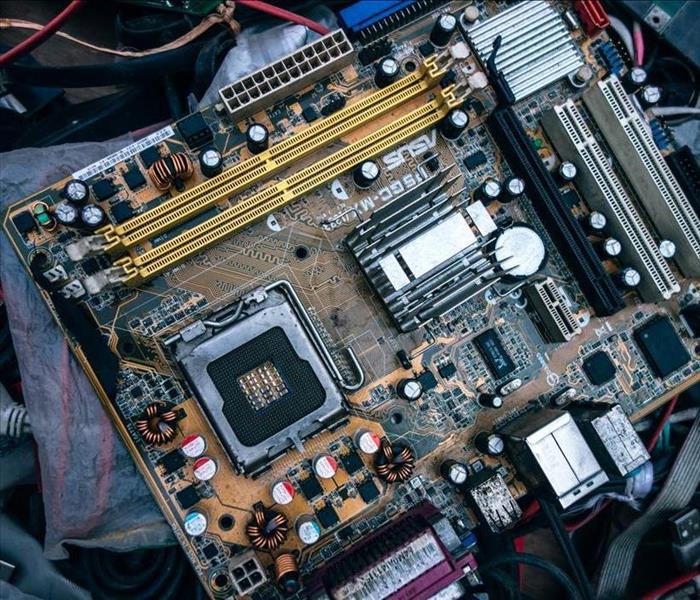 Smoke can permeate your electronic devices and cause damage even in areas you can't normally see. Seek professional help to avoid further damage.
Smoke can permeate your electronic devices and cause damage even in areas you can't normally see. Seek professional help to avoid further damage.
You may be wondering what you should do with your electronics if a fire has damaged them. You don't need to worry! There are many ways to clean these items and get them working again.
We'll go over the different cleaning methods and how best to avoid damaging your devices in the future.
How to Clean Electronics Damaged in a Fire
There are many ways you can clean your electronics to get them back into working condition. The best method for the device will depend on its make and model, but there are some general things you should do first before any other cleaning occurs.
First, unplug the device and remove any external power sources. Next, open up the case of your device to make sure there isn't anything inside that could cause another fire.
Finally, wipe clean all surfaces with a dry cloth or lint-free wipes (available at most electronics stores). You may also want to use a vacuum cleaner for crevices if possible. Now you're ready to start cleaning!
After this step, we recommend using distilled water with toothpaste squeezed onto a soft cloth-"not gel," as these types contain alcohol, damaging plastics, and metals. Fire-damaged electronics, especially televisions, should be handled by a professional. Always unplug the device before moving it, and never use a vacuum cleaner, steel wool, or detergent.
The best method for the device will depend on its make and model, but there are some general things you should do first before any other cleaning occurs.
Different Cleaning Methods
There are three different ways you can clean your devices: using water alone, wiping it down with a commercial solvent-based cleaner made specifically for electronics, vacuuming out dust and debris from cracks and creases in the case, keyboard keys, ports on the outside of the computer towers, etc.
Cleaning Smoke Damage from Electronics
Smoke damage can be in soot, black film, or a magnetic charge on affected electronics. The way to clean soot from an item is to use a mix of dish soap and water to create suds. You can also use rubbing alcohol if there is an oily residue on the surface that needs more attention.
For black film or magnetic charge, you'll need to rub in as much butter onto the affected area as possible-the longer it sits, the better! The process should take about 15 minutes for the best results. Then wipe with a soft cloth and dry off with another one gently afterward, so any remaining moisture doesn't leave streaks behind.
It's essential to be careful with smoke-damaged electronics because turning them on before they have been cleaned can cause more damage.
Be sure to look for your warranties for your electronics because the damage may be covered, and you may be able to get them replaced for free.
Having Your Electronics Professionally Cleaned
Another good idea for cleaning smoke and fire-damaged electronics is to leave it to the professionals. SERVPRO of University, SE Orlando can assist with fire restoration services. They have the equipment and expertise to remove all types of smoke particles, including those embedded in soft surfaces like foam or carpeting. You can arrange for your fire-damaged electronics to be picked up from your home, or many businesses have a convenient drop-off location.
If you're not sure if it needs professional cleaning, then use this simple test: Put on gloves and wipe off as much surface soot as possible with a dry cloth without wiping away any visible traces of water or other liquids. The cleaner is probably ok-otherwise, get them professionally cleaned! If there's an oily residue left behind after washing, use rubbing alcohol instead.
Fire Insurance Coverage in Florida
6/1/2021 (Permalink)
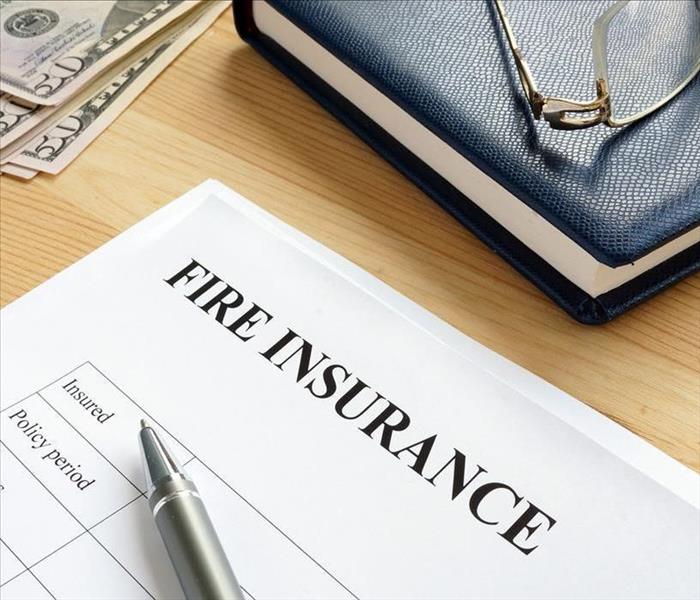 Fire insurance allows homeowners to have financial protection after a fire, and it also allows for property recovery if someone loses their life.
Fire insurance allows homeowners to have financial protection after a fire, and it also allows for property recovery if someone loses their life.
How To Get The Best Rates On Fire Insurance Coverage In Florida
One of the most important aspects of owning a home in Florida is having proper and adequate fire insurance coverage. If a fire should occur, the loss of life and property could be devastating. Fire insurance allows homeowners to have financial protection should a fire occur, and it also allows for property recovery if someone loses their life or property in a fire. Several things need to be considered when choosing a homeowners insurance policy in Florida. This list will help you get jumpstarted and figure out what insurance you need.
When buying a Florida homeowner's insurance policy, there are some basic coverage requirements that everyone will need to know about. Depending on where one lives, they may not have all of the coverage requirements that others in the state do. However, they are still important for anyone to understand before signing up for an insurance policy. Here are some coverage requirements in Florida that everyone should keep in mind.
The amount of coverage you will need depends largely on the type of insurance you purchase. In most cases, if you purchase homeowner's insurance, you will have full replacement cost coverage. This means that your insurance company will cover the cost of rebuilding your home from the original building to the current condition.
Most homeowners insurance in Florida will also provide coverage for lost rent due to damage to the home. With this in mind, if your home is destroyed and you can not rent it, your insurance company should cover the cost of renting your home to another individual. Additionally, lost income due to a covered loss might also be covered by your policy. This means that if your home is damaged and you cannot work in it, your insurance policy should also pay for the wages that you would have lost if you were no longer able to work in your home.
Some insurance companies in Florida actually offer more than just property damage coverage. Many companies include rental reimbursement coverage with their insurance policies. If a customer has to stay in a hotel to get replacement value on a piece of property, your insurance company will kick the bill into the foot. In addition, your insurance company might provide a percentage of your lost income as well. Any additional coverage can be added as additional funds from your pocket.
All major insurance carriers in Florida also offer storm damage coverage as well. If you live in an area that receives an off-season climate, you can usually find a good deal of discount prices on this type of insurance. Many insurance companies in Florida are constantly trying to outdo each other when offering discounts, so be sure to shop around for the best price possible.
In many cases, a fire insurance policy is unnecessary in Florida. Florida has a mandatory smoke and fire policy in place, but many people choose to skip it. Fire coverage typically only covers the cost of clearing away burning debris from your business or residence and does not typically cover any losses associated with your property. The cost to replace your personal property after a fire can be astronomical, and a good fire insurance policy will protect you in that regard.
If your business is destroyed by fire and you have coverage from your existing insurance policy, you might be able to recover some or all of your losses from your policy. You should always check with your current insurance company before purchasing a new fire insurance policy to ensure you are still covered. Many companies also offer specific coverage for fire damage in Florida.
Cleaning After A Grease Fire
5/28/2021 (Permalink)
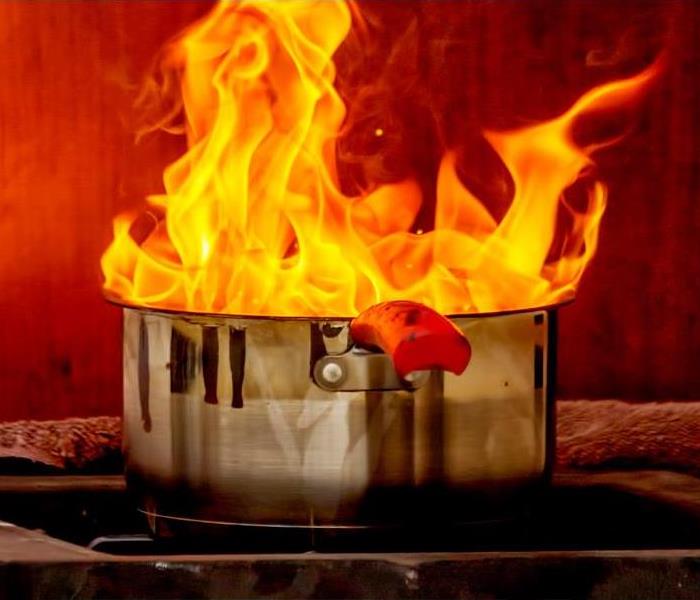 There are five million kitchen fires in the United States every year, according to statistics.
There are five million kitchen fires in the United States every year, according to statistics.
There are five million kitchen fires in the United States every year, according to statistics. The majority of these are grease fires, which spread quickly and can be hard to extinguish.
Because smoke and soot from grease fires can cause considerable damage, cleaning after a grease fire is time-consuming and often challenging. Usually, the job will require the expertise of professionals.
WHAT TO DO IN THE CASE OF A GREASE FIRE
If something you're cooking catches fire, don't panic. Keep calm, and remember the following tips:
NEVER PICK UP A BURNING POT OR PAN
Trying to move a burning pot or pan can cause the fire to spread or even result in personal injury. Be sure any fire is extinguished and the pot or pan cooled before you attempt to move it.
DON'T USE WATER
Never attempt to put out a grease fire with water. Not only will water not extinguish a grease fire, but it will actually cause the fire to spread.
COVER THE PAN WITH A METAL LID
Carefully covering the burning pot or pan will deprive the fire of oxygen, causing it to extinguish.
DOUSE WITH BAKING SODA
If there is no lid handy, dumping baking soda on a grease fire will also do the trick.
USE A FIRE EXTINGUISHER
The surest way to extinguish a grease fire is to use a fire extinguisher. Every household should have an extinguisher at the ready and within reach of the kitchen.
CLEANING AFTER A GREASE FIRE
Cleaning up following a grease fire can be a daunting task. The first thing you'll want to do is to open all the windows and get a few fans running. Be sure to turn off the HVAC system, as it may carry smoke and soot to contaminate other areas of your house.
Use vinegar to clean soot and grease. In addition to being an effective cleanser, vinegar helps remove the smell of smoke.
While cleaning, be sure to check surrounding appliances for smoke, soot, and grease damage. If your microwave is mounted above the stove it will likely need to be replaced following a grease fire.
PREVENTING GREASE FIRES
The following tips can help you significantly lower your odds of experiencing a grease fire while cooking:
DON'T LEAVE THE STOVE UNATTENDED
Because grease fires can spread very quickly and prove difficult to extinguish, the sooner they're caught the better. Never leave a pot or pan on the stove unattended.
USE OIL PROPERLY
When cooking with oil, be sure to use the correct amount. Also, be sure to heat oil to temperature slowly. Never cook frozen food in oil.
KEEP STOVE AREA CLEAR
Store dishtowels, pot-holders, and anything potentially flammable away from your oven and stove burners.
HAVE A LID HANDY
Always keep a metal lid close by when cooking on a burner. Having one handy with which to suffocate a grease fire can be the difference between a small incident and a dangerous and costly event.
WHEN TO CALL IN THE PROS
Because grease fires cause such extensive damage, and because cleanup can be a long, intensive process, it's almost always advisable to call in professionals.
Experienced experts like the folks at SERVPRO of University, SE Orlando know how to clean your fire damage quickly and efficiently. They also know how to locate hidden fire damage, such as soot and smoke contamination inside heating and air-conditioning ducts.
GREASE FIRES AND YOUR HEALTH
Soot and smoke are unhealthy and prolonged exposure can lead to significant health effects. In the event of a grease fire immediately remove children and pets from your home. You'll also want to replace any filters in your home, such as those in your refrigerator and furnace. Finally, discard any food that may have been contaminated.
A grease fire can be a frightening and destructive event. Should you experience a kitchen grease fire in your home, be sure to follow the above tips to lower your risk of injury and help minimize potential damage to your property.
Fire Damage Restoration Process
5/6/2021 (Permalink)
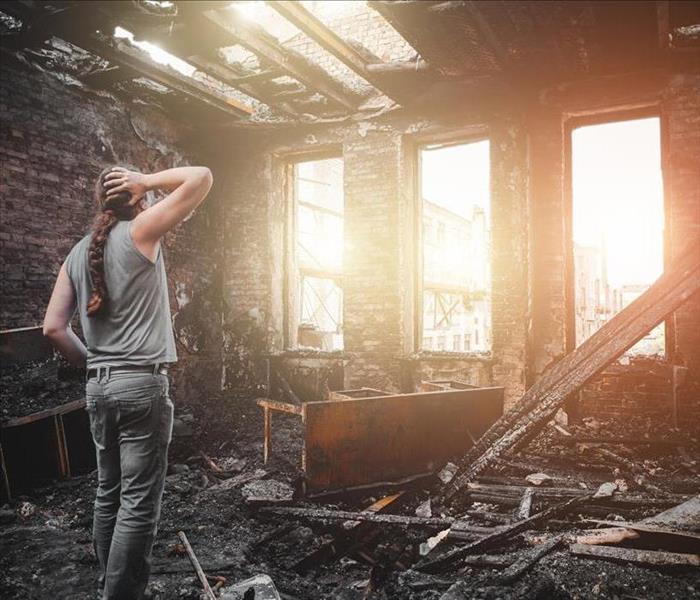 There are many hazards that come with the aftermath of a fire. You should wait for an inspector to deem the property safe before you enter.
There are many hazards that come with the aftermath of a fire. You should wait for an inspector to deem the property safe before you enter.
The Fire Damage Restoration Process
Few events can prove more detrimental to a property or its owners than fire. Fortunately, such occurrences do not necessarily have to spell the end of said structures. However, favorable outcomes in the wake of these events often necessitate the aggressive intervention of a fire restoration company like SERVPRO.
Salvaging a residential or commercial property following a fire requires adherence to strict guidelines such as:
Ensuring The Property Is Secured
Fire-damaged properties often possess several notable safety hazards.
First, these locations could still be precariously warm. The smoldering ashes and soot enveloping various internal components can still be too hot for persons to safely spend extended time periods and might precipitate potentially serious health effects.
Additionally, fire can create unsafe air. Oftentimes, infernos send a host of contaminants and pollutants into the surrounding air. Inhalation of these particles could result in short and long-term health effects.
Furthermore, the fire-destructed property could prove structurally unsafe. Structural instability could result in injury-inducing, potentially fatal events like building collapses.
Therefore, structural engineers and other safety experts must examine the fouled construction and ensure it is safe enough to spend any appreciable amount of time inside.
Performing A Thorough Assessment
Once the structure in question is secure, a team of experienced fire restoration professionals can enter the said property and perform a comprehensive evaluation. These trained subjects will determine the percentage of the structure that sustained fire damage, in addition to the severity of said destruction.
These findings will enable the investigating team to opine what remediation needs to be executed and the most befitting way to complete the said process.
Minimizing The Overall Damage As Much As Possible
The extent of the fire event often dictates if any personal property or the structure's interior components can be salvaged. However, following minor to moderate events, homeowners might be able to save certain property or heirlooms. Said holdings should be taken out of the damaged construction as soon as possible.
Beginning The Cleaning Process
As soon as the appropriate authorities deem the structure secure, the cleansing stage should commence.
Fire damage often leaves a significant number of large messes to clean, including soot, ash, and an appreciable accumulation of water used to douse said flames.
Many fire restoration specialists will reiterate the potential hazards contained in fire byproducts like soot and ashes. That said, water contamination can be just as if not more harmful to the property left intact, those executing the cleanup efforts, and the residents, employees, or patrons returning to the soon-to-be restored residential or commercial construction.
Small quantities of water are more than enough to cause extensive damage to interior features, such as walls, ceilings, various types of flooring, and furniture upholstery.
Moreover, water can quickly spurn the growth of illness-inducing substances like mildew and mold. These materials are known to precipitate appreciable health effects in sensitive individuals.
Ergo, these materials must be removed as quickly as possible by those holding the experience to complete said task properly. Furthermore, even the most minor fires will leave a trail of smoke, stains, and foul odors behind.
Eradicating these problematic occurrences often necessitates intense and comprehensive cleansing using products and implements specifically designed to tackle such jobs. Additionally, water removal may require specialized fans, dehumidifiers, and heaters. Furthermore, thorough remediation of carpeting and upholstery might be indicated to remove bothersome odors.
Restoration
Restoration is the process's final stage. The extent of this undertaking will depend heavily on the fire's severity and the type of material damaged as a result.
Typically, paint is a common fire casualty. This aesthetic wall covering often develops discernible bubbling and blistering following said events. Such damage must be scraped clean and thoroughly repainted.
Moreover, there is no one universal method for remediating, repairing, or replacing damaged materials like wood. Every building product falls under its own set of therapeutic protocols that must be carefully followed.
Skilled restoration contractors will possess this experience and know the proper remediation techniques to employ.
Contacting SERVPRO
Fires are often devastating events. However, residential and commercial property owners can recover from them. That said, they must act quickly and entrust an experienced restoration company like SERVPRO to handle the delicate but crucial steps needed to complete the restoration process.
Trying to Remove Cigarette Smoke Damage from Your Home
5/6/2021 (Permalink)
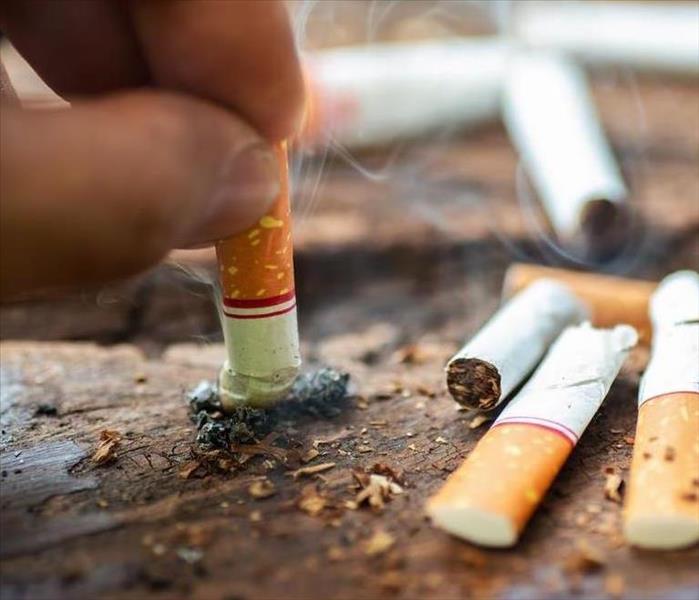 The process for eliminating smoke odor in your house depends on the severity of contamination.
The process for eliminating smoke odor in your house depends on the severity of contamination.
Don’t let the stale odor of cigarette smoke contaminate your indoor air quality. Removing cigarette smoke demands patience – the acidic smoke leaves resins and tars that permeate everything in the vicinity.
The process for eliminating smoke odor in your house depends on the severity of contamination. If someone smoked inside for a decade, restoration may require a more invasive approach, such as throwing items out or even replacing the drywall and carpet. If the room smells like an ashtray, consider throwing out items that don’t have sentimental value – sometimes that overstuffed couch is just too smelly and not worth the time and money you would spend on restoring it.
SERVPRO of University, SE Orlando has a few suggestions to show you how to remove the cigarette smoke smell from your house. You might be able to eliminate the smoke smell with just a few of these tips, or the job may require a combination of several methods (and repetition) to remove the odor entirely.
Start with Hard Surfaces
Begin by opening all windows and doors to provide ventilation while you clean. Use a spray bottle and a rag to wipe down all hard surfaces with a 50 / 50 solution of white vinegar and hot water. You may also wash the walls and ceiling with a mixture of 1/2 cup ammonia, 1/4 cup vinegar, 1/2 cup baking soda, and a gallon of hot water.
Leave no surface untouched: Clean walls, doors, knobs, light fixtures (bulbs too), ceilings, fan blades, and anything the smoke came in contact with. Wipe down all knickknacks, photo frames, and decorations as well. Consider throwing out items such as lampshades and throw pillows that absorb odors well and are easy to replace. To reach high spots, use a ladder or an extension pole with a rag clamp.
Wash Fabrics
Next, focus on fabric, carpet, and upholstery – beginning with what you can’t throw in the washing machine. Sprinkle everything with baking soda, and let it sit for a few days. Once the baking soda has had a chance to absorb the odor, vacuum it all up and repeat as necessary. Then steam clean the carpets. If you don’t have a steam cleaner, you can buy or rent one at your local hardware store. If your steam cleaner has an upholstery attachment, use this to clean drapes or upholstered furniture too.
Wash your laundry-safe fabrics (couch-cushion covers, some drapes, and curtains) in the machine with 1/2 cup vinegar instead of detergent. Follow up with another wash cycle with your preferred detergent. It’s best to let these items air-dry outside to prevent shrinkage.
Air Circulation & Purification
If weather permits, keep windows and doors open for as long as is practical. Use fans to encourage air circulation – have one fan blowing air from outside on one side of the room, and put another fan across the room to exhaust the air outside. An air purifier with a HEPA filter can help remove odor-causing molecules. If the odor remains after you air out your home, place activated charcoal or bowls of white vinegar (or even apple cider vinegar) around the rooms to absorb odors. Replace the charcoal or vinegar every few days. Be wary of scented “odor removal” products, which may just mask the smell instead of removing it.
Homeowners should also replace HVAC air filters. Your home’s air filters help remove odor-causing molecules, and they work best if they’re replaced every two to three months. Consult with the furnace or AC unit manufacturer to find a filter that may help with odor removal (e.g., charcoal or HEPA filters). You should also inspect your ducts for any dust or debris that may contain smoke molecules; this may be contaminating the fresh air in your home as it travels down your ducts. If you see buildup, hire a professional to clean your ducts.
Ozone Generator
If the smoke odor still lingers after you complete all these steps, an ozone generator is your next best option. Ozone is a powerful cleanser and is very effective at eliminating odors. Ozone generators create activated oxygen. By oxidizing the smoke molecules, they can eliminate the smoke smell entirely (if used properly). Homeowners can rent or purchase ozone generators from their local hardware store. Follow the manufacturer’s recommendations, which usually involve leaving the machine running in a closed room for a specific period of time.
Call the Experts
Removing the smell of cigarette smoke can be a frustrating process. SERVPRO of University, SE Orlando can assist with placing HEPA-filtered air scrubbers and Ozone equipment. However, we cannot guarantee that the smell of cigarette smoke will be removed from a property. Give us a call today for more information!





 24/7 Emergency Service
24/7 Emergency Service
